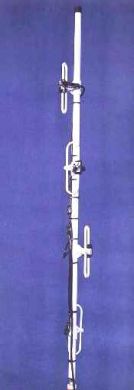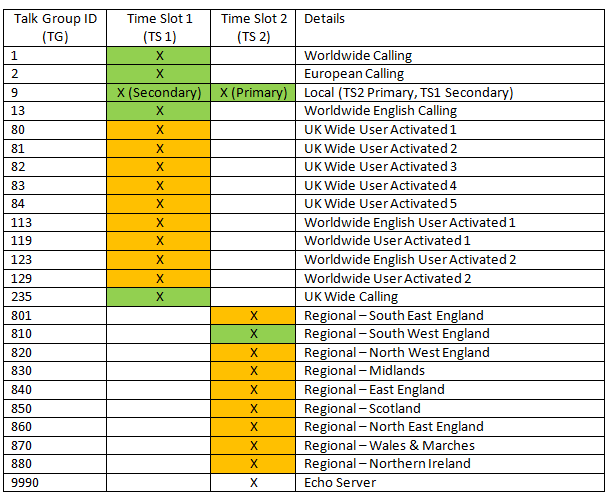

GB7SU
is currently operating from the site of GB3SH in the East of Southampton.Having
operated previously from a site close to Dock Gate 10.
The long-term plan is is now in place collocated GB7SU with the other Southampton
repeaters to make DMR (Digital Mobile Radio) available to a wider amateur population.
| The repeater is a Motorola DR3000 and the antenna is a 4-stack dipole array configured to give onmi-directional coverage. | |
 |
 |
|
In
order to have access to the DMR network, a user ID is required. This ID
is programmed into your DMR radio and is unique to you and can be cross-referenced
to your callsign.
The DMR ID is obtainable from CLICKING HERE just sign up and an ID will be issued. You will need a pdf copy of your licence which you can download from Ofcom if you don't already have a pdf version. Ofcom can be found CLICK HERE DMR is a TDMA system - TDMA is Time Division Multiple Access. Basically, it's a digital system that has two time slots, allowing two concurrent conversations to take place on the same frequency. This is easier to understand by viewing this diagram: |
 |
| Analogue
shown on the left is a constant carrier that we are all very familiar with
when using for example an FM transceiver. With TDMA to the right, the time
slots can be seen, there are two time slots each of 30ms, all in the same
12.5 KHz bandwidth of a standard FM transmission. GB7SU is connected via the Internet to the Phoenix DMR network. This network consists of over 60 repeaters around the UK and many more around the world. Your DMR radio will have what is known as talk groups, think of these as say, sub channels operating on the repeater. These talk groups are split across the two time slots. The different talk groups are for different functions, one for worldwide calling, one for European calling, one for UK calling then there are regional ones and others for general chat. |
Below is a chart showing a list of talk groups and the time slot these talk groups are used on.

|
Those
shown in green are permanently enabled
talk groups. This means that if you transmit on say talk group 235 (UK
wide calling) then your call will be heard on all the other Phoenix UK
repeaters. Monitor
UK DMR Network here CLICK
HERE |